All products featured are independently chosen by us. However, SoundGuys may receive a commission on orders placed through its retail links. See our ethics statement.
How to setup a Dolby Atmos soundbar
February 6, 2023
You’ve just bought a new Dolby Atmos soundbar and realize, “Wait a minute, I have no clue how to set this up for the best sound.” Well, you’re in luck because we’re going to break it down for you. If you’re like me, setting up a home audio device is intimidating. After all, the last thing you want is one crossed wire to result in some kind of Mission Impossible-esque urgency. Fortunately, soundbars are easy to set up, and worst-case scenario, there’s always a manual for you to fall back on.
Editor’s note: This post was updated on February 6, 2023 to include a note on Atmos-enabled content and apps.
What you should know before completing your Dolby Atmos 4K setup
Dolby touts the use of object-based audio, which understands each sound as a single object that can be positioned anywhere above or around you. When used and set up properly, your soundbar will mimic how we perceive sound on a daily basis, rather than the stereo sound that many of us are accustomed to from our headphones.
Upward firing soundbars vs soundbars with virtualized Dolby Atmos sound
When picking out your Atmos-enabled soundbar, you’re met with two configuration options. Upward firing soundbars are outfitted with elements that are angled toward the ceiling. As you may expect, the best results come from flat ceilings; slanted or curved ceilings won’t fair as well. This reflection of sound gives the illusion of greater space and soundstage.
Dolby Atmos supports up to 128 simultaneous audio objects in a given mix. This facilitates a realistic, immersive sound.
Cinemas can afford to hang speakers directly above us that shoot audio downward because the ceilings are much higher. If you try to do this at home with a typical 10-foot-high ceiling, though, noises will sound unnaturally close. What’s more, the perception of sound doesn’t change as you move with an upward firing configuration, unlike when using a 5:1 or 7:1 setup.
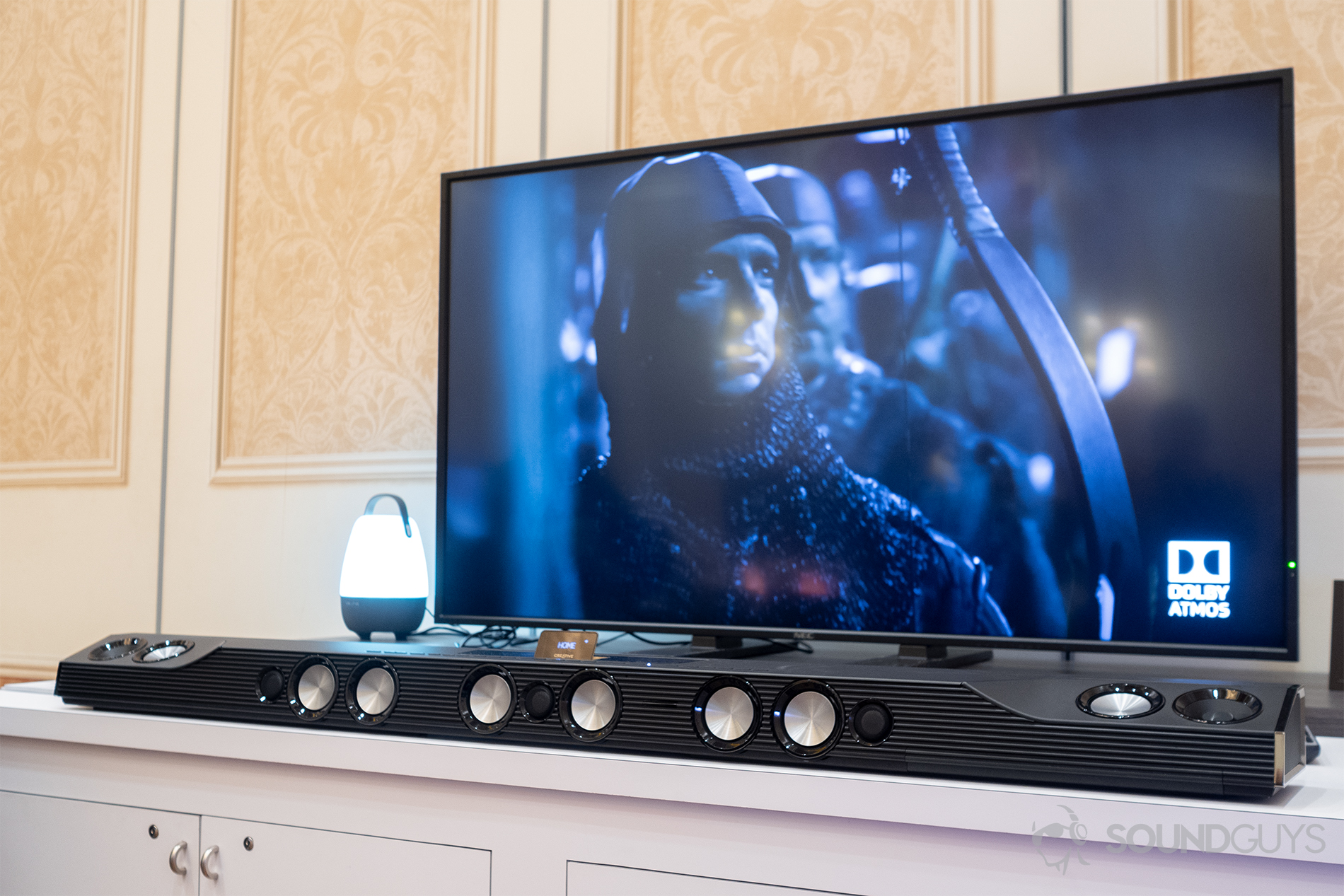
On the other hand, there are soundbars available that use Dolby Atmos technology to create a similar auditory experience without the upward firing hardware elements. This creates the sensation of overhead audio, giving the same 360-degree effect without additional speakers working with the soundbar. This uses anywhere from two-to-four output channels to produce the perception of two or four aerial speakers.
Setting up your Dolby Atmos soundbar
If you’re like the rest of us and want to get the most out of your shiny audio gadget, mount the soundbar in front of your television. Then, set it at the same height or slightly above your ear level and make sure that it’s approximately five feet away. If you went with the upward firing option, make sure that the vertical drivers have an uninterrupted path to the ceiling. Speaking of which, the ceiling is a really important part of setup. Ideally, the height should be 7.5 to 12 feet tall and should be made from plaster, wallboard, hardwood, or any other flat, rigid material. If you’ve been looking for an excuse to get rid of your popcorn ceiling, this is a great one.
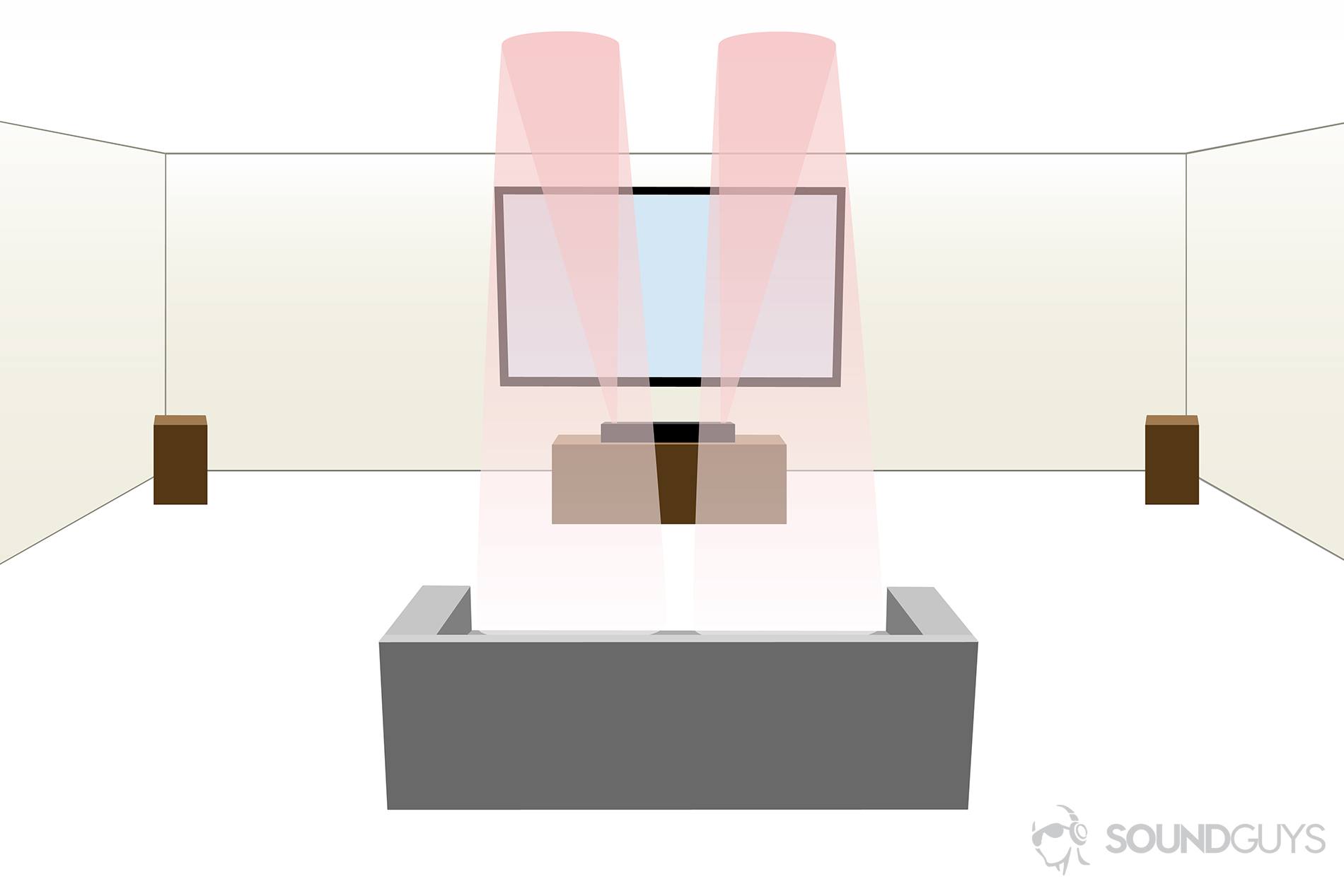
Large ornaments like chandeliers or fans can interfere with the projection of sound. If your soundbar includes built-in side-firing speakers, make sure that the path from the speakers to the wall is clear too. Otherwise you’ll run into disrupted and distorted audio.
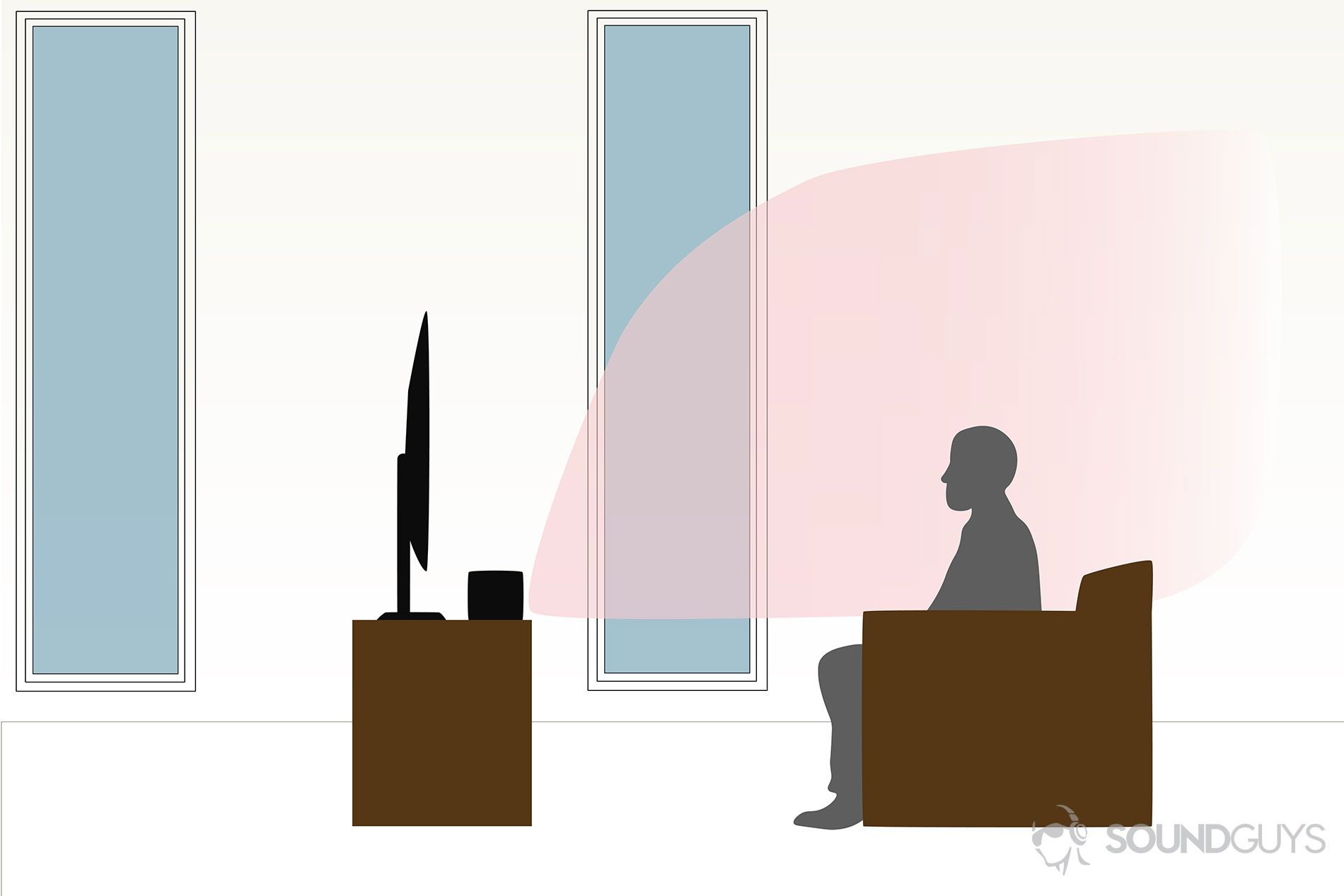
If you opt for a virtual Dolby Atmos soundbar, the placement is nearly the same. Keep it below and in front of the television, at ear level, and without any obstructions. From there, it’s much more flexible and doesn’t require any specific distance from you or the walls.
What if the content isn’t compatible with Dolby Atmos?
You won’t get the same effect, but Dolby has a partial solution. For example, if your media is encoded as stereo content, the integrated Dolby Surround upmixer lets all non-Dolby Atmos content use the same speaker array. This grants greater immersion than from a typical home system. That said, more and more media is Dolby Atmos compatible such as Blu-ray; various streaming and cable service; and the Xbox One, Xbox One X and One S, and Xbox Series X/S, but not Sony’s PlayStation 4 or PlayStation 5—it has its own spatial sound option, though that’s only for headphones (for now).
How to tell if the streaming content is Atmos compatible
For most streaming services, you should see an Atmos icon in the show information page, but if you’re using Amazon Prime Video or another streaming service that doesn’t enable Atmos content by default: you’ll have to enable it. Most often this is found in the audio options of the app—simply navigate to this menu and enable Atmos playback. It’s also possible that an app update broke Atmos like what happened to Disney Plus a few months back. You can either revert the app to a previous version or wait for a new version to be released.
How is Dolby Atmos different from surround sound?
Just as stereophonic sound operates via two channels, surround sound typically comes in a five or seven-channel setup, 5:1 and 7:1 respectively. Though these arrangements sound much better than mono or stereo sound, they’re still limited to a given number of channels. And if you’re unfamiliar with the significance of a channel, all you have to know is that each one determines the distance, direction, and loudness of a specific sound.
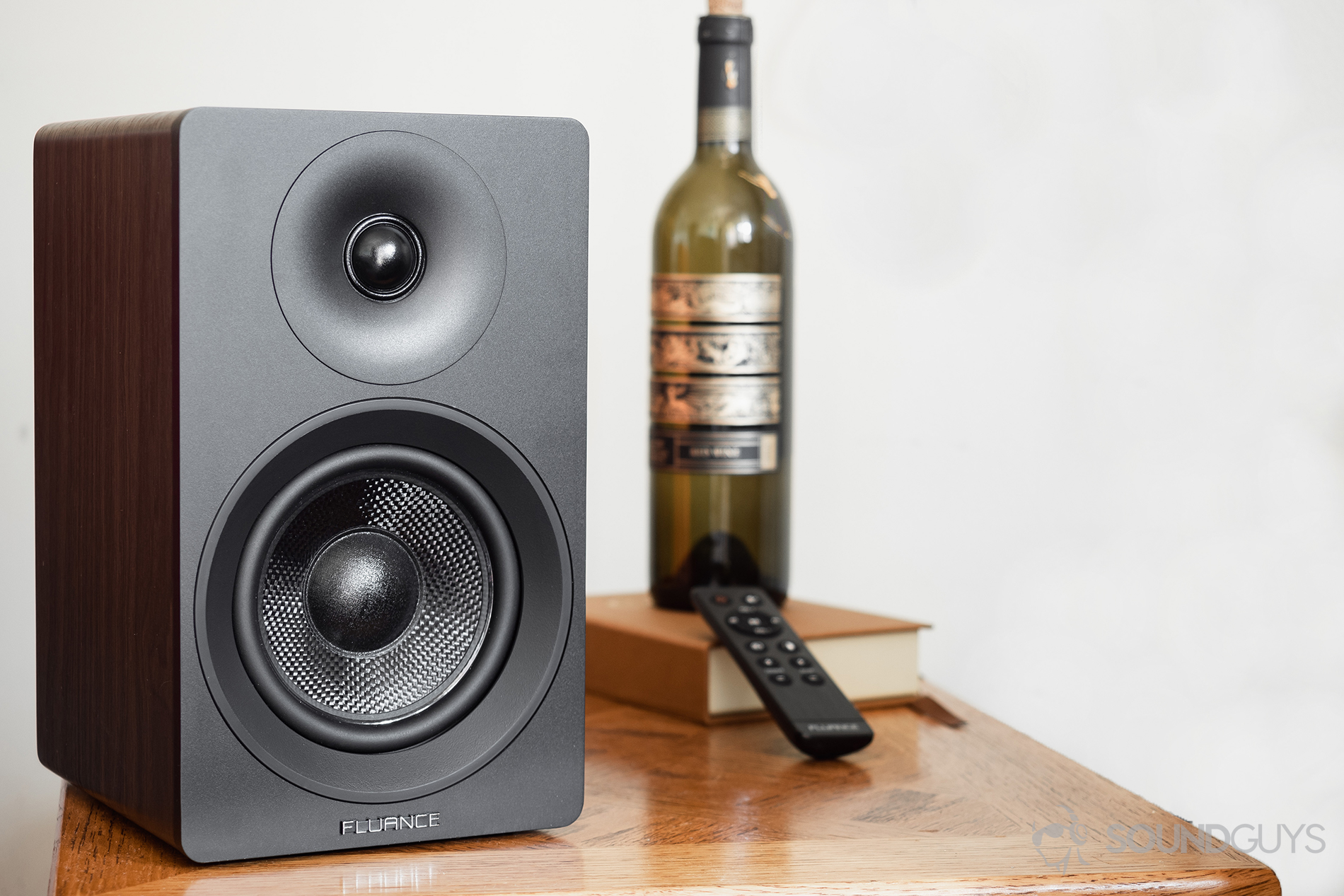
Seven varying perspectives may seem like a lot, and it is, but think about how we hear everything all the time. Your neighbor’s lawn mower? You can’t see it, but you sure know that it’s encroaching on the west side of your property line. That squeaky fan above you? You probably know just by hearing it that it’s two feet to your right and four feet above you. And that’s how Dolby Atmos works.
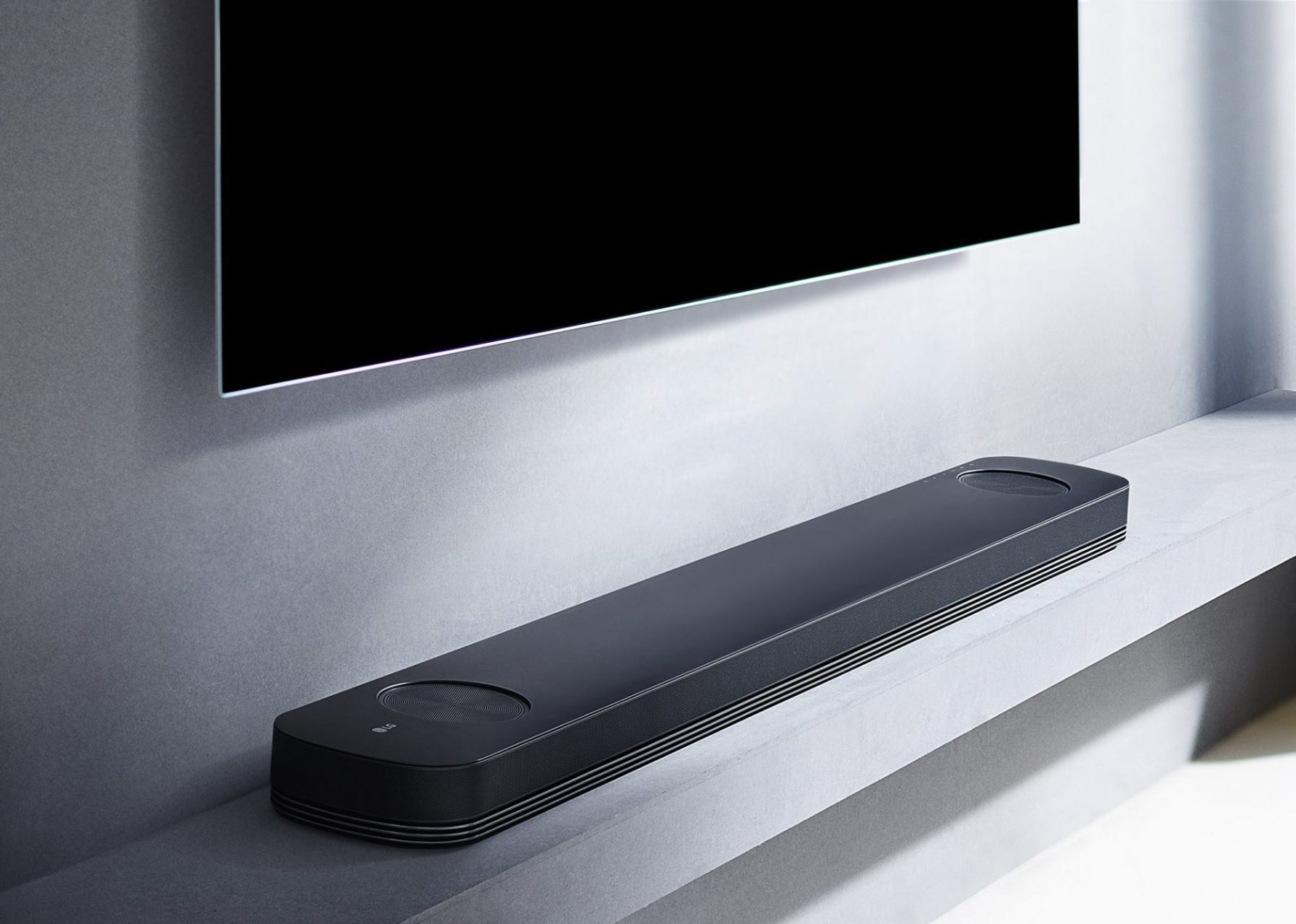
Instead of being confined to a certain number of channels, Dolby Atmos creates an atmosphere of sound that blankets you for a more realistic and immersive experience. The example given on Dolby’s website is a helicopter taking off. Rather than perceiving the sound as being behind you and then in front of you as it moves on screen, Atmos carries the sound above your head too. This places you in the scene, as opposed to being a passive observer of the scene.
If you have a lot of money to burn and want a beautiful example of the full Dolby Atmos home theater experience, check out the Sennheiser Ambeo soundbar, which we gave an Editor’s Choice award for its incredible performance. If you want something a little more affordable but still great, check out the Bose Soundbar 900.